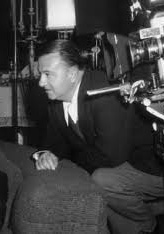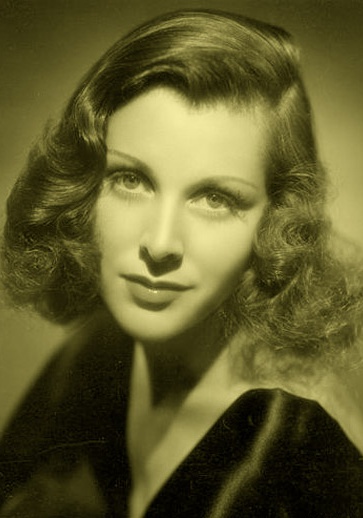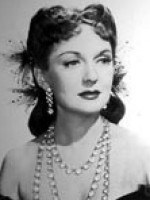与僵尸同行 I Walked with a Zombie(1943)

导演: 雅克·特纳
编剧: Ardel Wray 夏洛蒂·勃朗特 Curt Siodmak
主演: 詹姆斯·埃利森 弗朗西丝·迪伊 汤姆·康威 伊迪丝·巴雷特 詹姆斯·贝尔 Christine Gordon 特蕾莎.哈里斯 兰斯洛特爵士 达比·琼斯 热尼·勒戈恩
类型: 恐怖
制片国家/地区: 美国
上映日期: 1943-04-30
片长: 69 分钟 IMDb: tt0036027 豆瓣评分:7.1 下载地址:迅雷下载
简介:
- A young Canadian nurse (Betsy) comes to the West Indies to care for Jessica, the wife of a plantation manager (Paul Holland). Jessica seems to be suffering from a kind of mental paralysis as a result of fever. When she falls in love with Paul, Betsy determines to cure Jessica even if she needs to use a voodoo ceremony, to give Paul what she thinks he wants.
演员:
影评:
- 昨天刚看完,不论是镜头还是情节都非常不错,本质上是部爱情片。几段伏都教招魂(祭典)和诅咒的仪式拍得非常到位,狂欢而神秘的巫舞亦为影片增色不少。片中运用了大量伏都教(又称“巫毒教”)役使僵尸的邪恶传说,其中运用到的巫术包括模仿巫术、接触巫术、巫蛊等,结尾处高大黑人僵尸欲带走庄园女主人的镜头让人想起《弗兰克斯坦的新娘》
附:伏都教
伏都教最著名与最恐怖的特色是活死人,即是僵尸。如果有人开罪别人,那人会找巫师,巫师会让他吃下河豚毒素,他会进入奇怪的假死的状态,成为奴隶,在庄园干苦工。
推荐网站:
I Walked with a Zombie维基百科 Tourneur preferred I Walked with a Zombie to Cat People and frequently cited it as one of his favorite films. Of all Tourneur’s films, I Walked with a Zombie goes farthest in the direction of pure cinematic poetry and the use of sounds and images purely for their “power of suggestion,” a power enhanced by the film’s narrative strategies, whose insistent ruptures, enigmas, and contradictions force the viewer to give up the attempt to read the narrative in a linear way. The film also expresses more directly than any other Tourneur film the essential features of his view of life: refusal of condemnation; respect for cultural difference; and the awareness of a permanent unknowability behind the lives and motives of people, their relations with each other, and their place in the cosmos.
an obsolete Hollywood novelty capitalizes on the now time-honored zombie trope by the maker of CAT PEOPLE
A Hollywood primordialexploration of the now time-honored zombie trope, running around a svelte 69-minute and with the filmmaker who previously brings us CAT PEOPLE (1942), I WALKED WITH A ZOMBIE holds its own in its compact narrative that takes place in theCaribbean island of Saint Sebastian, where the wife of a sugar plantation owner has slumped into a zombie-like state, viz. a living dead under the spell of voodoo magic.
Audience are whisked onto the tropical land with our heroine, a Canadian nurse Betsy Connell (Dee), who snatches the well-paid job to minister to the aforementioned wife Jessica Holland (Gordon), whose first apparitional appearance is a mild hair-raiser, and instinctively swoons for her hubby, Paul Holland (Conway), a suave gent ailed by a pessimistic streak, the first thing he tells her is that "everything is putrescent”. As she dedicatedly takes it on herself to bring Jessica back to the living world, a manifestation of her lofty affection to the man she loves, and is out of step with a more plausible self-serving/possessive maneuver that more likely pops up in the context of romantic pursuit, her last resort to work the miracle hinges on the local voodooism, and the most atmospherically stirring sequence is where she chaperones a sleep-walking Jessica across a nocturnal cane field interspersed with memento mori, to attend an occult ceremony and is appalled by the sight of a dead-fish-eyed guardian Carrefour (Jones), an archetypal zombie embodiment that might give viewers at then nightmares.
DirecterJacques Tourneur, cunningly straddles the explanation between scientific diagnosis and ethnic necromancy, also configuresa bare-bones JANE EYRE plot to leaven the narrative, although Frances Dee flourishes as a gamely virtuous can-doer, and theater dab-hand Edith Barrett upstages the rest with a layered rendition as Mrs. Rand, Paul’s mother, whose evasive culprit identity actually counterpoints her palpable bonhomie, the film per se is too much an obsolete novelty to be seriously reckoned as a masterwork, not even with the help of Sir Lancelot’s calypso invention, especially when he is unceremoniously introduced as a Janus-faced fabulist (apologizing first, scandal-disclosing later).
referential film: Tourneur’s CAT PEOPLE (1942, 7.0/10)





